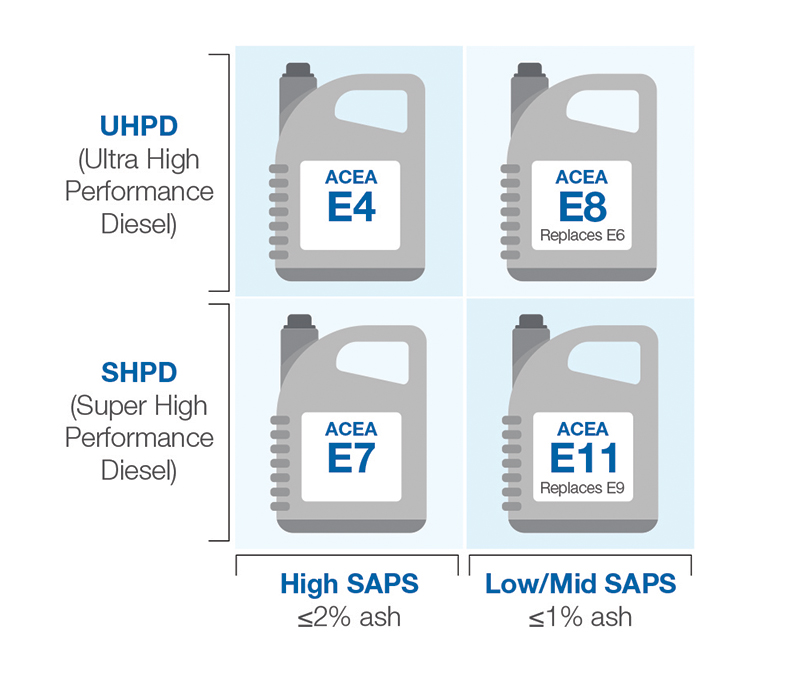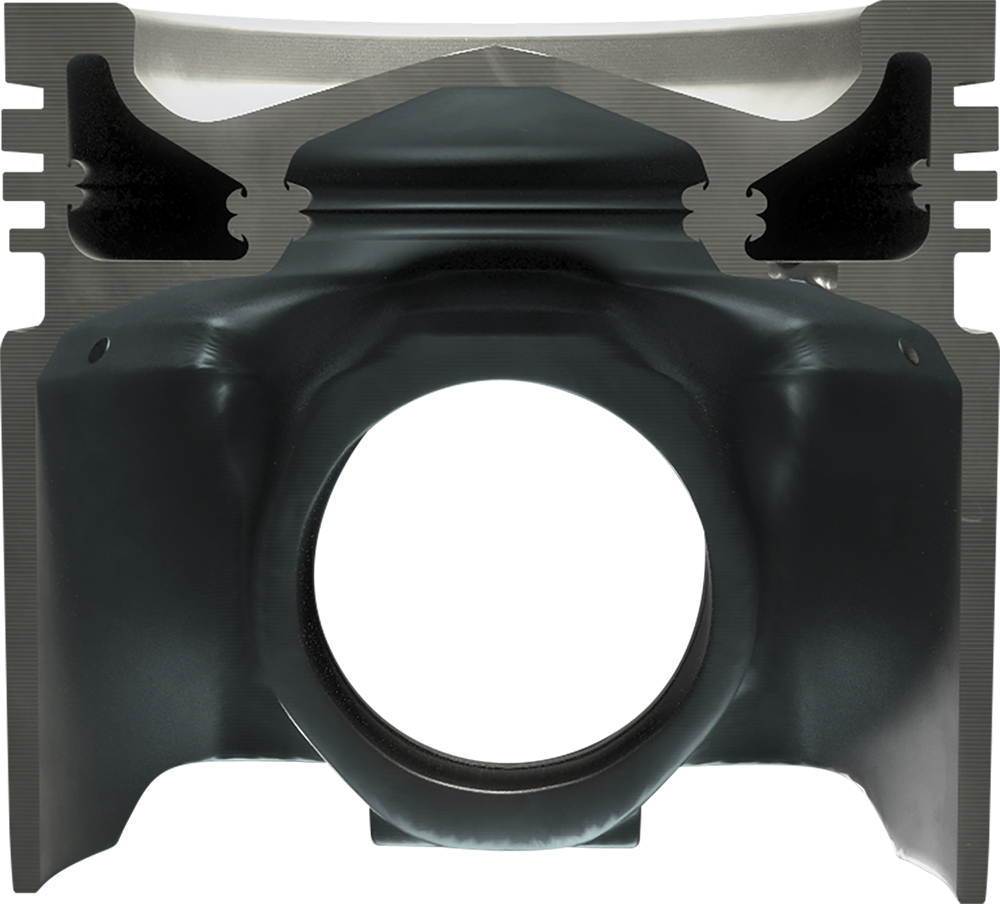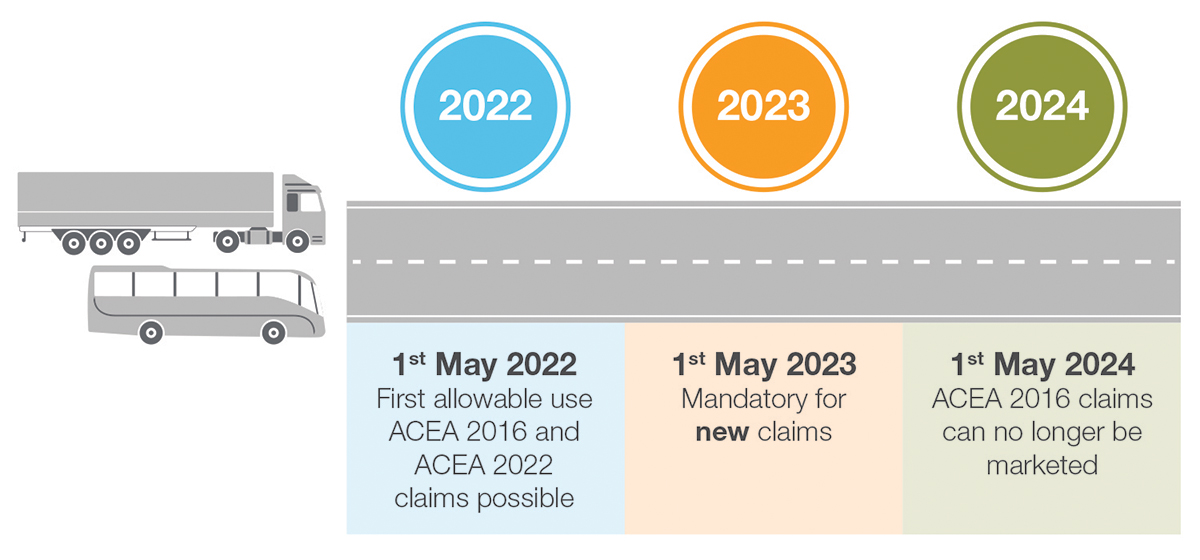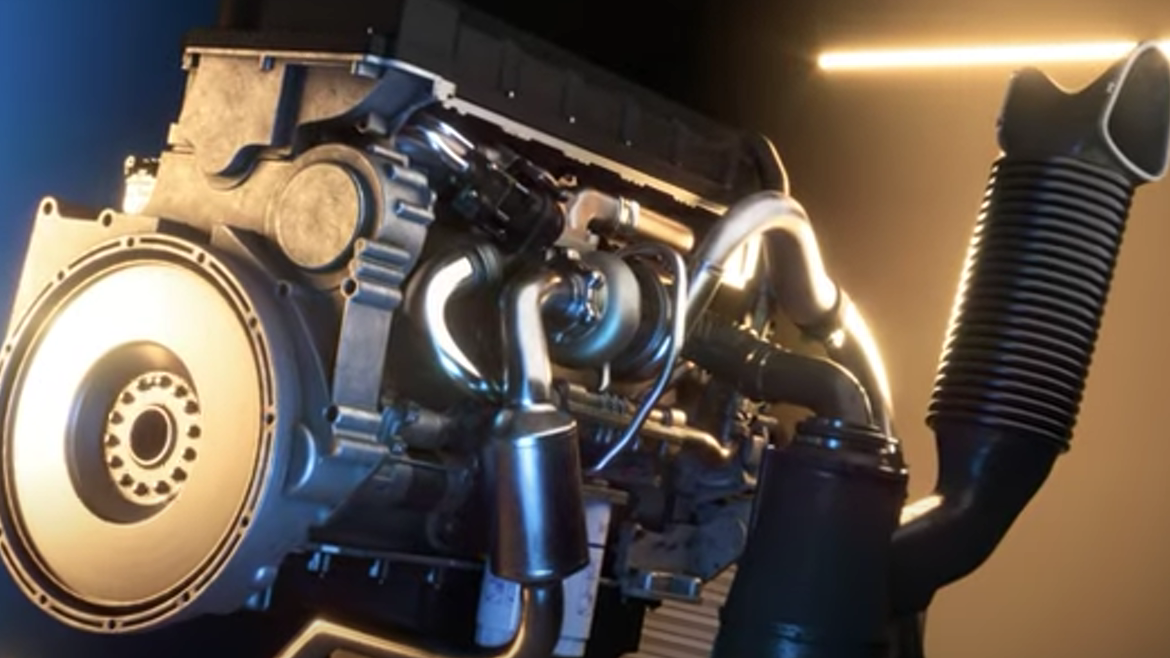Sep 29, 2022
Posted by Alex Brewster, Product Manager, Commercial Engine Lubricants, Nigel Britton, Technical Manager, Commercial Engine Lubricants
Since 1996, the European Automobile Manufacturers’ Association ACEA (l’Association des Constructeurs Européens d’Automobiles) has prescribed the minimum quality level for service-fill engine oils demanded by members. In May 2022, ACEA formally announced and released its most recent Heavy-Duty oil sequences update, the first refresh since 2016.
The new release represents significant advances in lubricant performance levels. Specifically, the changes highlight the ongoing challenges facing heavy-duty diesel commercial vehicle manufacturers amid growing hardware complexity and the adoption of alternative fuels. New alignments with key industry and Original Equipment Manufacturer (OEM) specifications, along with engine technology, also underscore continuing market demand for reduced emissions, increased efficiency and engine durability.
ACEA 2022 Heavy-Duty Update: What’s Included?
At a macro level, new and replacement engine testing and two new performance categories are among the changes.
In the low to mid Sulphated Ash, Phosphorus and Sulphur (SAPS) categories, ACEA E8 has replaced ACEA E6 while ACEA E11 has replaced ACEA E9. Both address newer vehicles, i.e., those with latest aftertreatment technology. In the high SAPS category, ACEA E4 and ACEA E7 have been maintained to protect vehicles already in the fleet (reference Figure 1). The proposed ACEA F categories for improved fuel efficiency, which are applicable to lower High Temperature High Shear (HTHS) viscosity lubricants, remains a requirement for ACEA. However, the timeline for when this will be released remains unclear. Therefore, the ACEA 2022 heavy-duty oil release focused on the ACEA E categories.
Within the changes are several key micro-level updates designed to address various issues.

Inclusion and Adoption of API-Focused Tests
One aspect of the update is the inclusion and adoption of American Petroleum Institute (API) tests, which are part of API CK-4 and API FA-4. This brings greater global synergies across the API and ACEA categories and aligns the global requirements for minimum lubricant performance.
Key API Test Additions
The Volvo T-13 Engine Oil Oxidation test (ASTM D8048), previously introduced in the API CK-4 and FA-4 updates, is included in the new ACEA E8 and ACEA E11 performance categories. Its inclusion necessitates an increased level of oxidative performance to better prevent oil thickening and acid formation within the engine.
The Caterpillar Oil Aeration Test (COAT) (ASTM D8047), previously introduced in the API CK-4 and FA-4 update, is also included in ACEA E8 and ACEA E11. The COAT signals the need for improved lubrication aeration performance. Air entrainment within the lubricant can lead to oil starvation, power loss and accelerated engine wear.
Increased Focus on Biodiesel Cleanliness and Compatibility
In both ACEA E8 and ACEA E11, the OM646LA Bio-Diesel Engine Test (CEC L-104-16) limits for piston cleanliness are increased compared to prior sequences ACEA E6 and ACEA E9. This increase in severity is an important update which further addresses lubricating oil degradation due to FAME (Fatty Acid Methyl Ester) content in modern diesel fuels. Biodiesel (FAME) can disproportionately accumulate in the sump during engine operation due to its lower volatility profile versus typical mineral diesel. The reactivity of FAME can increase the rate of lubricant oxidation and degradation, which can increase the formation of performance-draining piston deposits.
Delivering Improved Cleanliness and Wear Protection
Another critical element of the ACEA 2022 heavy-duty update is further alignment with industry-recognized API engine tests for improved engine cleanliness and wear protection. In ACEA E7 and ACEA E11, we see the introduction of the Caterpillar 1N (ASTM D6750) and Caterpillar C13 (ASTM D7549) cleanliness tests respectively. Whilst the option remains to use the Daimler OM501LA (CEC L-101-09) data to support ACEA E7 and ACEA E11 (to ACEA E9 limits), the inclusion of the Caterpillar tests ensure cleanliness remains a key, measured parameter as the Daimler OM501LA hardware availability reduces over time. In the ACEA E4 and ACEA E8 categories, a new industry engine test has been introduced; the Daimler OM471 piston cleanliness test (CEC L-118-21) and is a replacement for the Daimler OM501LA. While the Daimler OM471 piston cleanliness test is mandatory in the new ACEA E8 category, OM501LA test results meeting the requirements of ACEA E4-16 may still be utilized for the latest ACEA E4 category.
Developed by Daimler, the OM471 six-cylinder engine test is designed to assess the performance of lubricating oils against piston deposits. A critical aspect of the Daimler OM471 engine is the use of steel pistons versus conventional aluminium pistons used in the Daimler OM501LA test.

Aluminium pistons have shown strong performance characteristics historically. However, steel pistons present advantages in the forms of improved fuel economy performance (due to less friction), high torque management, long durability and improved total cost of ownership. The move from aluminium to steel hardware metallurgy is significant and presents new lubricant performance challenges.
Major Lubrication Implications ACEA E8 | New Category
ACEA E8 is a forward-looking category and should not be regarded as a simple category replacement for ACEA E6. Rather, it should be viewed as a performance increase and the most significant aspect of the ACEA 2022 update. ACEA E8 aligns with the latest generation commercial vehicle hardware in the market, and enables OEMs to specify a lubricant at a new performance level and will require even more stringent testing to carry the latest ACEA claims.
The New Daimler OM471 Piston Cleanliness Test
The introduction of the Daimler OM471 piston cleanliness test perfectly encapsulates the ACEA E8 implications for lubricant marketers. The Daimler OM471 test, which uses steel pistons, runs at higher temperatures and is double the duration of its predecessor (Daimler OM501LA), ensuring heavy-duty commercial vehicle engine oils meet new cleanliness requirements. The transition from the use of aluminium to steel pistons within commercial vehicle engines has been a trend since the 2014 introduction of Euro VI. OEMs have been challenged with the need to further optimise combustion efficiency, driving an increase in cylinder pressures and combustion temperatures. Aluminium pistons, which historically displayed excellent performance characteristics, could no longer deliver durability at the increased pressures and heat cycling, hence the increased use of steel pistons. The latest designs of steel pistons include large volume cooling chambers in close proximity to the piston crown and ring grooves which are pressure fed with the engine lubricant to provide piston cooling and prevent excessive pistons crown temperatures.
Steel pistons are designed to maximize the cooling through use of chambers and thin walls (reference Figure 2). Lubricant is sprayed at the undercrown of the piston and acts as a thermal transfer fluid. In extreme operating conditions, the lubricant in these regions must cope with temperatures in excess of 350°C, therefore a lubricant with high levels of oxidative stability is required. Lubricants which cannot cope with these temperatures can lead to deposit build-up on the undercrown or in the cooling chambers. This deposit build-up will thermally insulate the piston and lead to excessively high temperatures as the lubricant can no longer provide sufficient cooling. In extreme cases, this can lead to catastrophic failure of the piston. Undercrown deposits are a rated feature of the Daimler OM471 test. In being exposed to this excessive heat, the inclusion of the Volvo T-13 Engine Oil Oxidation test is a critical pairing and also emphasizes the role of modern oils as cooling lubricants more so than in the past.
ACEA’s recognition of the need for a new piston cleanliness test utilizing steel pistons reaffirms the industry need for lubricants that deliver improved performance and provide engine cleanliness protection in more heat-intensive operating environments.
Registration Timelines
For the lubricant marketer, ACEA 2022 claims are possible from 1st May 2022. New ACEA 2016 claims can continue to be made for 12 months (May 2023), but all claims from May 2024 must conform to ACEA 2022 (reference Figure 3).
Engine lubricants that carry the ACEA 2022 heavy-duty industry approval, enable oil marketers to deliver and position higher-performing engine lubricants that exceed the new specifications. They also assure fleet owners and operators that their modern heavy-duty diesel equipment is protected and able to deliver performance benefits demanded by heavy-duty commercial vehicles around the world.

Looking Ahead
Change is constant in every aspect of our daily lives and the commercial vehicle market is no exception. With the ACEA 2022 release, and specifically the introduction of the ACEA E8 category for low SAPS lubricants, existing ACEA E6 approved lubricants in the market today may not be able to deliver the high performance demanded by ACEA E8. The new ACEA E8 category presents an opportunity for lubricant marketers to upgrade their commercial vehicle product portfolio in terms of both performance and quality as well as enabling alignment with the latest generation of hardware in the commercial vehicle fleet. In parallel, OEMs will continue to focus more and more on increasing efficiency and reducing emissions in accordance with the latest legislation requirements whilst maintaining durability. While the release of the ACEA F category for fuel-efficient lubricants was not part of the ACEA 2022 update, its future release will continue the path to enabling lower HTHS viscosity grade lubricants, to deliver additional fuel efficiency benefits with approved OEM engine hardware and aftertreatment devices to meet the future commercial vehicle market drivers.









